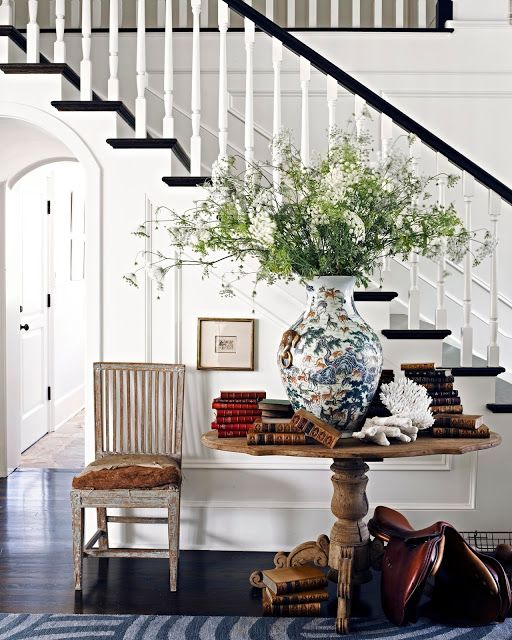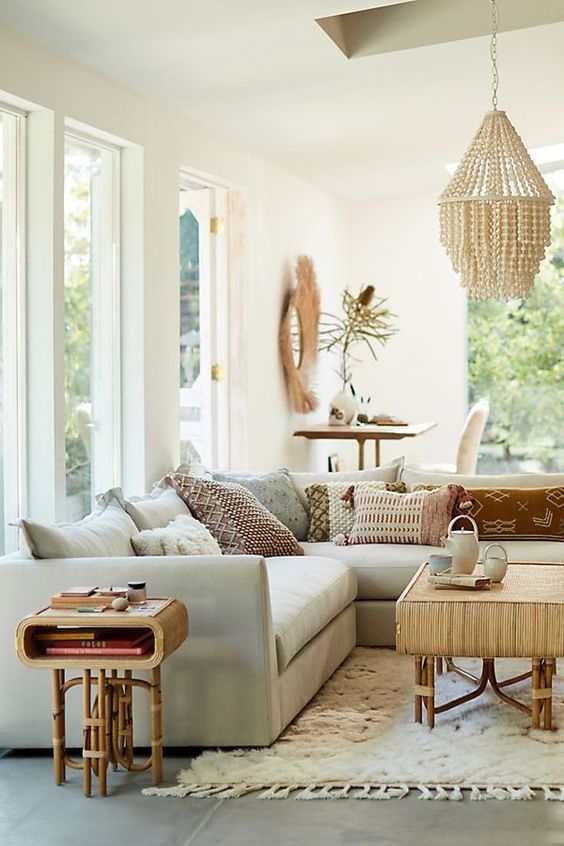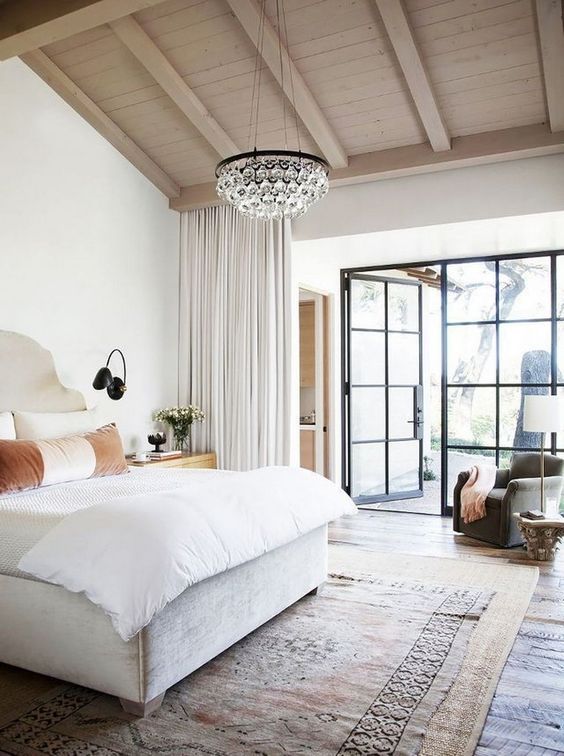HGTV Syndrome
HGTV Syndrome is a set of unrealistic expectations in design television leading to problems for interior designers, their clients & projects. “Faster” seldom means “better” in the interior design industry, but the popularity of HGTV and other design television channels has led to unrealistic expectations. In reality, the interior design trade is a veritable slowpoke in an era of instant gratification.
Design television makes our job harder to say the least.
Above, via Jeffrey Alan Marks
Unrealistic Expectations
Here are a few realities. Not including architectural work, it takes somewhere around one to four weeks to put together a design scheme for a living room. It can certainly be done faster the more simplistic the scheme.
Designers collect anywhere from $2,500 to $8,000 for the design potion of a living room depending on size, detail and scope of work. If the client goes for the design ideas as they are, and if everything is in stock, it takes another three months before orders are received and installed and that’s not counting the time it takes to place orders, oversee custom fabrications, and arrange installations and deliveries.

HGTV and Design Television
One of the positives to come from HGTV and the influx of design television, is that designers have changed the way they do business in order to stay relevant and retain profitability. They are becoming more niche oriented, focusing on one or two specialties. And they’ve become more user-friendly, providing value-based, packaged services with set price tags and more clarity on what you get for your money.
via French Girl Style
Handling Expectations
The industry of design is not as easy as television leads you to believe. Dealing with people’s homes is an emotionally charged business. It’s not just about managing fabrications, orders, deadlines and budgets. It’s about managing expectations and emotions too.
The way to handle expectations is by under promising and over delivering, trying to prepare clients for the possibility of delays. I avoid mistakes with a few simple ordering and tracking systems. I avoid disappointment by making certain the colors, fabrics and designs are in keeping with the client’s personal style preferences. You can redefine someone’s style to a certain extent, but if you go too far beyond their exposure to current trends it will backfire.
Unrealistic Budgets
HGTV and design television project budgets are where the biggest misconceptions occur. Because it targets a largely do-it-yourself audience, and because their work will be televised, the participating designers do a lot of work that’s long on design time and easy on the budget. Unfortunately, these ideas aren’t always realistic in the real world where designers have to make a living. We don’t have time to do our own sewing, painting and carpentry the way it’s often shown on television. It wouldn’t be cost efficient for us. But there are tricks of the trade that good designers know and enjoy utilizing when the project calls for it.
Via Veranda
Behind the Scenes
I’m working on an out-of-town project for a woman who recently lost both elderly parents and went through a divorce. She moved into a new home some time ago and hasn’t been able to tackle the emotions of unpacking, furnishing and decorating it. She’s been sleeping on the sofa and the office and both guest rooms contain unpacked boxes. Evidently, she saw a piece about me in her newspaper a few years ago and had been saving it till now. She sent me a long and touching letter recently. I won’t go into detail but suffice to say I will be wearing a lot of hats in this project.

via The Nord Room
The first hurdle was to help her gain some clarity on what I can and can’t do for her. I can’t unpack her boxes of course, or organize her, or help her in any way without some kind of budget. Her living, dining and family rooms are temporarily furnished with patio furniture, several antique settees, and numerous, tiny wood chairs and tables. I explained that I can’t do a good job for her without a proper sofa and at least minimal window treatments.

via Willow Inspired
I received another letter from her after our first consultation. In it she stated she’d had a change of heart and wanted to leave the living, dining and family rooms undone for now and focus on the “reorganizing” of the master bedroom, guest rooms and office. This was confusing. What exactly would my role be? Where would the creativity be? How would it be cost effective for her to hire me to do a job that really only requires choosing furniture from storage?
Unknown
I came up with a win-win solution. I charged her a small fee for the addition of the master bedroom design and told her I’d help her (without an additional fee) choose antiques from storage, and paint and window treatments for the guest rooms once she has placed orders for two sofas and some window treatments.
How do people perceive value? How do they communicate their desires? Why are some people clear about what they want and others lacking in clarity? You can ask all the questions you can possibly think of and still not get a clear answer. Managing expectations about budgets and timelines and asking lots of questions regarding lifestyle and personal preferences– these are key in setting the tone for a mutually successful design project.
Homes are personal places and designer and client work closely together over the course of the project. She is counting on me to make her home life okay again and I hope I am able to meet her needs.
Shiree’s Style File
For the project above, instead of ordering a custom sofa from North Carolina at around $5,000 with fabric to specification, she could go with a retail design catalog sofa in the $2,500 to $3,000 range in a program fabric. Program fabric refers to the fabrics the retailer keeps in stock. They aren’t always great quality, color or design so she would need to ask for swatches.
For window treatments, she can keep the existing white wooden blinds and do simple curtains and valance designs with fabrics in the $50 – 60 per yard range.
For the kitchen and bath updates, she could paint walls and cabinets and replace the light fixtures and cabinet pulls. Granite or solid surface counter tops and new appliances will have to wait till the budget allows.
Utilizing most or all existing wood furniture is a great plan in budget conscious projects. You usually get more visual impact with new paint and fabrics, and older wood products are invariably better quality than the new ones from PB and RH.
Know where to economize and where to splurge by looking honestly at your needs versus wants. Maybe you don’t like your cocktail table. But if what you really need is new lighting, go without a cocktail table and buy the lamps.
If your home isn’t supporting you the way it is, are you ready for a change? Get some help via my complimentary premier design and wellness download, The Wellness Home, 5 Steps to a Beautiful, Restful Home for Women Who Value their Health and Wellness. It’s the prettiest little book. It’s also a quick read with super easy design solutions that help you lead a beautiful, healthier lifestyle at home, plus my 3-to-5 Things Framework that gives you step by step actions to get started and stay on track. Get yourself some help, post haste!
That’s it for today. Thank you for stopping by!
Shiree’









